You’ll find neon lights throughout the city, and the world’s busiest pedestrian crossings in the world! Tokyo demands you give it enough time to fully appreciate it. Read on and find out about the best photography locations in Tokyo.
10 Best Tokyo Photography Locations
Tokyo is big. Knowing the best places to shoot will ensure you get some amazing shots of the vibrant city.
10. Shinjuku
Shinjuku is an interesting area of the city. Whether you’re looking at the large crowds of people, the many neon lights, or the skyscrapers of the business district, this area is very much modern Japan. You’ll need a little time to properly wonder around this area. The best time to visit is during the evening.
Kabukicho
This is a vibrant nightlife district within the Shinjuku area. In a city full of neon lights, this is where you’ll find most of them. Those neon lights are why it’s worth coming here in the evening. Come during the day too. You can photograph the famous Tyrannosaurus Rex as it scales the tall buildings of the area.
Memory Lane
The mood you get in this area makes for some incredible street photo opportunities. This narrow alleyway lit up with traditional lanterns is home to lots of restaurants and drinking establishments. It’s very popular among workers from the nearby business district.
Shinjuku Business District
The largest concentration of tall buildings in Tokyo can be found in Shinjuku. This gives you plenty of potential subjects for some modern architecture photography. Among the most famous are the Metropolitan government building, the Mode Gakeun Cocoon tower, and the Sompo Japan building. The Sompo Japan building is a great subject, as it sits right in front of a nice intersection that makes for an excellent foreground. It’s a good idea to bring a wide angle lens with you, to get the most out of this district. Best time to visit—Evening and throughout the night. Location—Memory lane, Kabukicho, Sompo building.
9. Shibuya
Shibuya is another area of Tokyo where you’ll get your fair share of neon lights, shopping, and dynamic energy. Finding some side alleys is the best approach to get a really moody photo. The big draw for many people (including photographers) is that this is the busiest street crossing in the world. This intersection holds the record for the most number of people crossing it at one time. There are a few locations you can use to photograph this place, so let’s break it down.
Street level—With so many people, this crossing obviously gives you street photography opportunities. Aim to show context by including other passersby, and perhaps the white lines of the zebra crossing. You could also attempt to have a friend stay still, while you expose for 1/2 s, to capture the motion blur around them. Starbucks—On the opposite side of the street to the Shibuya subway station is a Starbucks. This sits on the second floor with views overlooking the junction. This is a good option for a slightly elevated view. Magnet by Shibuya 109—Now for that scene-setting photo. Photos taken at street level won’t show just how many people are crossing all at once. That means you’ll need to go roof-topping. Fortunately, there is a roof that’s open to the public. You’ll need to photograph through glass, so watch out for reflections. Use a wide-angle lens to capture the whole scene.
Best time to visit—Visit during the evening rush hour, to ensure the crossing is busy with people. Location—Magnet by Shibuya 109.
8. The Tokyo Skytree
The new tower in town is the Tokyo Skytree. It opened in 2012 and dominates the skyline. This tower presents two types of photo—photos of it and photos from it.
The view—Standing at 634m, this tower offers great views of the surrounding area. On a clear day, you’ll be able to take a series of photos to create a stitched panoramic photo that shows Tokyo in all its glory. The tower—The tower itself offers a great focal point for a cityscape photo of Tokyo. Examples might include juxtaposing the pagoda at the nearby Sensoji temple against the Skytree tower. Alternatively, find a viewpoint where you can photograph the Skytree from another building. Finally, there are locations nearer the base of the tower. These can be used to photograph the tower from street level.
Best time to visit—During mid-morning for a daytime view of Tokyo, or in the evening for a blue hour photo. Location—The Tokyo Skytree.
7. Roppongi Hills Mori Tower
A great view over Tokyo is possible from the Roppongi Hills Mori Tower. It has a viewing gallery at 250m high and an outdoor sky deck at 27m. This tower is one of the prime locations to get a clear view of the business districts of the city, and a view towards Tokyo Tower. It’s the view towards Tokyo Tower that you should visit. The photos taken here are best achieved during the day, or as the blue hour approaches. Should you photograph from the indoor viewing area, make sure you’re careful to avoid reflections on the glass you are photographing through. Best time to visit—Mid-afternoon and into the evening. Location—The Mori Tower.
6. The Tokyo Metropolitan Government Building
Shooting Tokyo photography means you’ll be taking photos of a lot of tall buildings. This is yet another one you can photograph from. The advantage this building has over some of the others is that it’s free! The view from the top also offers a different perspective than the other towers. You’re more in the center of where all the other tall buildings in Tokyo are concentrated. On a clear day, you’ll also be able to see Mount Fuji from this location. But this is also true of all the other towers though.
Worm’s Eye View
This building also offers a great photo from street level looking up. Within the government building complex, there is a circular wall. This wall rings a central courtyard like area in front of the two towers. It’s possible to photograph looking up, and then use this wall to frame the towers. To do this photo justice, you’ll need an ultra-wide-angle lens. A lens with a focal length wider than 15mm or a full frame camera is best. Best time to visit—The blue hour. Location—The Tokyo Metropolitan Building.
5. Harajuku
The beating heart of Tokyo’s youth culture is the reason you’ll want to visit Harajuku. In years gone by, this is the area of town you’d find cosplayers dressing up and visiting Yoyogi park. It’s still possible to see cosplayers here, but times have changed and it’s a lot less common these days. There are plenty of other things to attract the eye of a good photographer though. One such location is the top end of Takeshita street, from where you’ll get a clear line of site down this busy shopping street. One great photo you can take here is of the mass of people as they move along the street. Harajuku is also home to various animal cafes. And you’re allowed to take photos of the pets inside.
Cosplay
The Harajuku girl dressed in vibrant cosplay has been an attraction for photographers in recent times. Though it’s less common to see in Harajuku now, there are still people who enjoy dressing up. To really have a chance to see more of this part of Japanese culture it’s better to visit an event. You’ll need to plan your trip to coincide with one of these, but you’ll be guaranteed some amazing portraits. Best time to visit—Visit during the day or the weekend. Sunday afternoon is the best time to see cosplayers. Location—Harajuku.
4. Asakusa
Having enjoyed the neon lights of Shinjuku, and the youthful energy of Harajuku, it’s now time to capture more traditional Tokyo photography in Asakusa. There are many restaurants and alleyways to enjoy here. The central hub of the area is the Sensoji temple. This is where you’ll be able to photograph some traditional Japanese culture and see Buddhism being practiced.
Kaminarimon gate—The thunder gate is one of the most photographed structures in Tokyo. With its giant red lantern and supporting structure, it’s very photogenic. In order to avoid the crowds, you’ll need to visit here early in the morning. Sensoji temple—The path from Kaminarimon leads up to Sensoji temple, a beautiful temple in the middle of the city. The photo of the Hozomon gate with the five-story pagoda in the background is a popular photo to take here. Street photography—This is an area with great potential for street photography. With devotees and lots of incense smoke around, you can get photos with a lot of moods. You’ll also see people dressed in traditional Kimono dress in this area. You’ll have the chance to contrast them again people in contemporary clothing.
Best time to visit—Early morning to avoid the crowds. Mid-morning to see life around the temple. Blue hour for photos of the illuminated temple. Location—Sensoji temple.
3. Odaiba
The Odaiba area of Tokyo is along the waterfront of the Sumida river, a little outside the center of the city. There are several reasons why you should visit as a photographer, such as the replica of the Statue of Liberty, or the local amusement park. The main reason is to photograph the Odaiba rainbow bridge. There are several excellent viewpoints for the bridge, and you can also take photos as you pass along the bridge on your way to Odaiba.
The train to Odaiba—The train you catch to Odaiba is a monorail. You can sit at the front of the train and take photos through the front window while the train is moving. As the train passes over the bridge, it goes through a tunnel-like structure, and you can create interesting motion blur photos as the train is moving. You’ll need to go handheld, so exposures of around 1/4th of a second work well. The bridge—There are numerous viewpoints to photograph the bridge with the cityscape in the background. You can photograph along the river bank with rocks in the foreground or use an elevated viewing platform. There is also a location you need to pay to enter, with arguably the best view. There is a sphere observation room attached to the Fuji TV building, but check the opening times before you visit.
Best time to visit—A couple of hours before sunset for the bridge motion blur. Blue hour for photos of the bridge. Location—Odaiba.
2. Eitai Bridge
It’s what you can photograph from here that will draw you to this location. You’ll need to arrive early as well. It’s not uncommon for this place to be crowded with others shooting Tokyo photography. The reason to visit here is to capture the moving boats as they pass underneath you and move down the river. Ahead is a group of apartment buildings, and this will provide the main focus to your photo. The location of these apartments is where the river splits, some boats go left and others go right.
Nighttime Long Exposure
This is not a daytime photo either. You’ll need to arrive around sunset and begin photographing during the blue hour. Choose your composition with care. You won’t want to move your camera at all for around one hour. Now wait for boats to pass under the bridge and capture their light trails as they cruise down the river. Boats move much slower than cars. In order to capture the light trails, you’ll need to put the camera on continuous fire. Expose for 30 seconds each time and aim to capture multiple boats during a sequence of around 100 photos. Finally, these light trails need to be merged together and layered on top of each other using post-processing. Best time to visit—Reach the location 30 minutes before sunset. Location—Eitai bridge.
1. Hamarikyu Gardens
Tokyo contains several green spaces worth visiting, with places like Ueno and Harajuku offering good alternatives to the big city. The Hamarikyu gardens are especially beautiful though. They can be accessed by riverboat from Asakusa, or you can use the subway and make the short walk to them. The gardens contain lots of paths canopied by the trees and some nice ponds. You’ll be able to juxtapose some of the more modern city buildings against the green space of this park. Finally in the middle of the park is an idyllic tea house from where you can enjoy a nice view and a nice cup of tea. A little food and drink photography might be an option at the tea house as well. Best time to visit—During the day, on a sunny day. Location—Hamarikyu gardens.
Essential Day Trips From Tokyo
It’s well worth getting out of Tokyo, with some amazing locations within easy reach. The Japanese railway network makes these trips easy to plan with regular and reliable trains. Here you’ll discover three locations which will make great day-trips.
Nikko
To visit Nikko and do it justice, you’ll need to make an early start. It will take you around 2 hours to reach this town by train, and you can leave from Asakusa. There are several places worth visiting. It’s possible to see them all if you arrive early enough.
Toshogu shrine—Nikko has many shrines, but this is perhaps the most important one you can visit. It’s worth visiting in the early morning ahead of the crowds if you can. Kammangafucchi gorge—This gorge contains lines of Buddha statues. These statues all have red woollen hats and a bib. This gives a great color contrast to the natural greens in the background. Kegon waterfall—A little outside Nikko is the Kegon waterfall close to lake Chuzengi. There are several viewing platforms from where you can photograph the waterfall at the site.
Getting there—There are several options to reach Nikko by rail.
Yokohama
Now a large city to the south of Tokyo, Yokohama was once a sleepy fishing village. That all changed when Yokohama became a treaty port that allowed foreign trading in the 19th century. This history means that the town contains some interesting architecture from that era, in addition to the modern buildings found along the waterfront. Yokohama is a great city to visit for cityscape photos, and for a visit to its Chinatown. Getting there—Yokohama is less than an hour from Tokyo by train.
Kamakura
Along with Nikko, a visit to Kamakura will allow you to see more of Japan’s cultural heritage. The giant Buddha statue at Kotokuin temple is quite literally the biggest attraction in town. There are lots of temples and shrines to visit on a very worthwhile day-trip to this town. Getting there—You’ll need to take two trains. The first to reach Kamakura station, and a second to reach Hase station, which is closer to the historic center.
Tokyo Capsule Hotel
There are lots of good options for places to stay in Japan. The idea of staying in a capsule hotel isn’t for everyone, and you may have tried one of these outside of Japan. If you only ever stay in one capsule hotel in your life though, make it the 9 hours capsule in Japan. This is a chain of hotels, so you can find them in other cities in Japan as well. It’s ultra-modern. You’ll feel like you’re staying in a space ship. It’s also possible to get an amazing photo of the line of capsules. Just avoid disturbing other guests if you look to take a photo here.
Conclusion
Shooting Tokyo photography is an amazing experience. There are so many opportunities for great photos. You’ll find immaculately presented food, super modern architecture, and fascinating history. Tokyo is a really great place to begin your adventure in Japan. It will keep you occupied for days. To get the most of your photography, ensure you pack the right travel photography equipment. Don’t forget to bring a tripod with you, and a good prime lens for night-time street photography. Check out our Next Stop: Travel Photography e-book to make the most out of your trip to Japan!



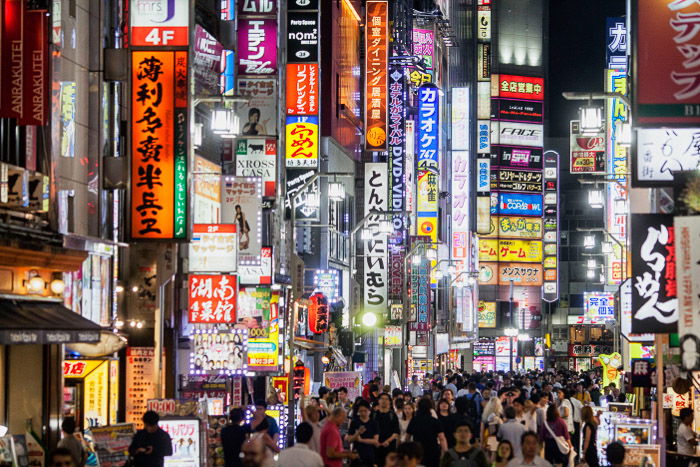
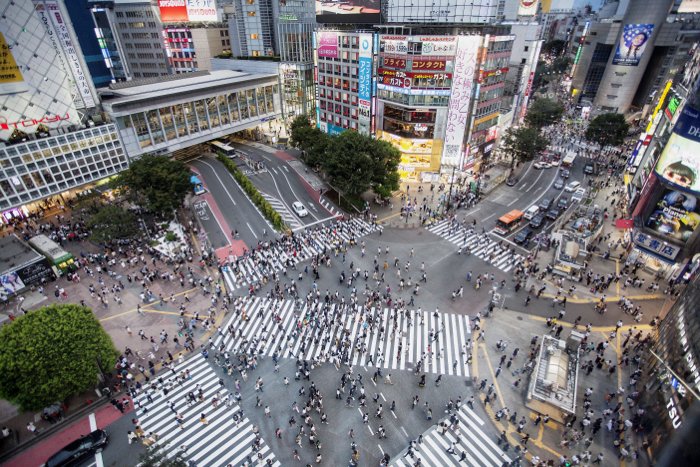

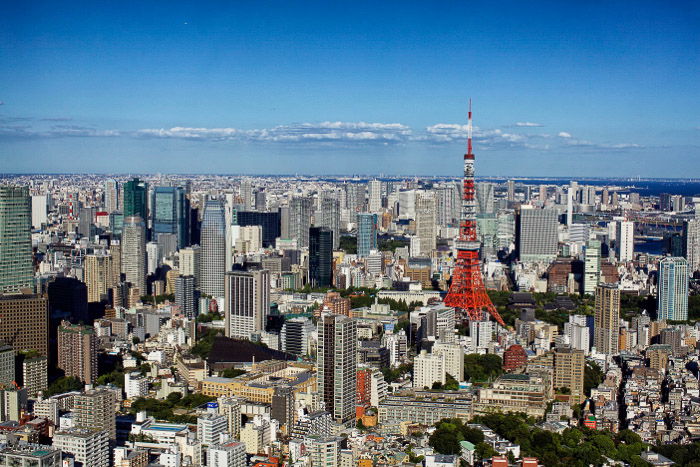
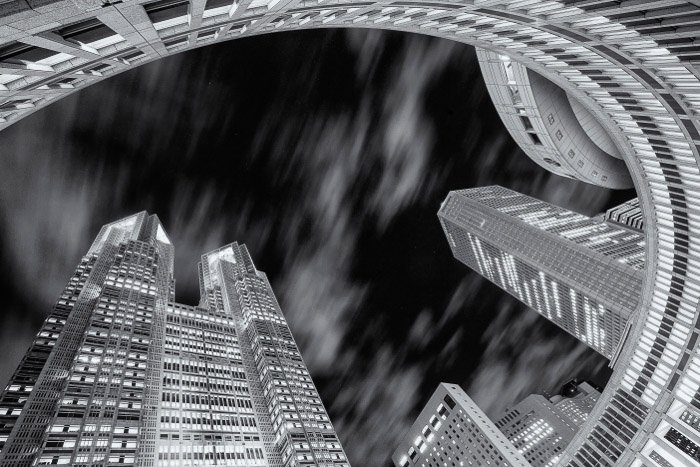
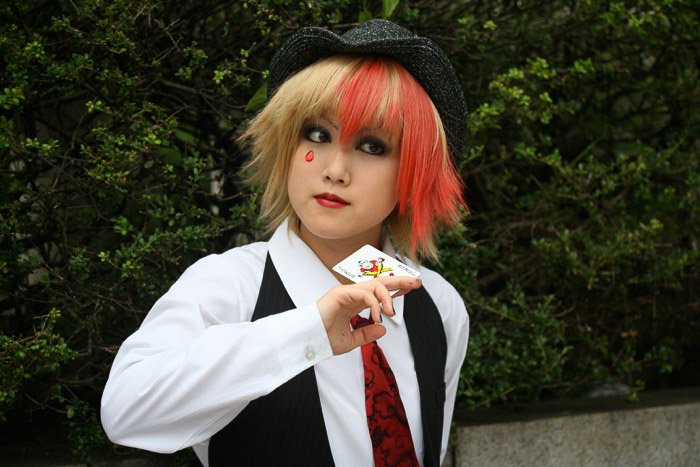
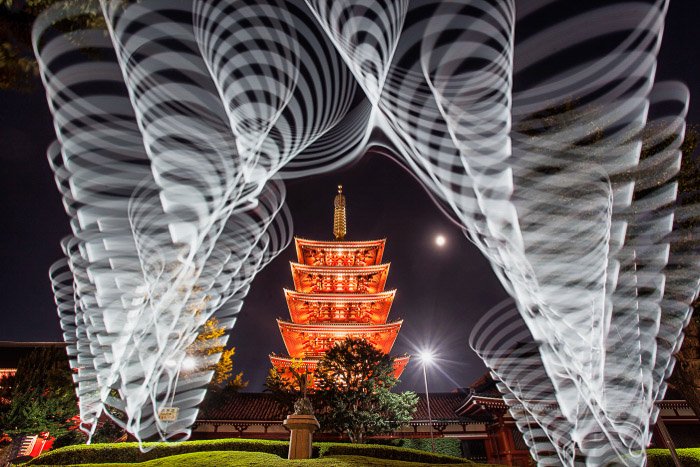
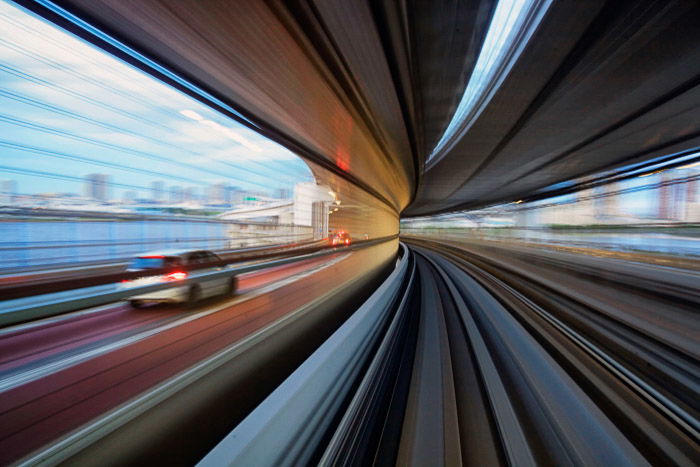
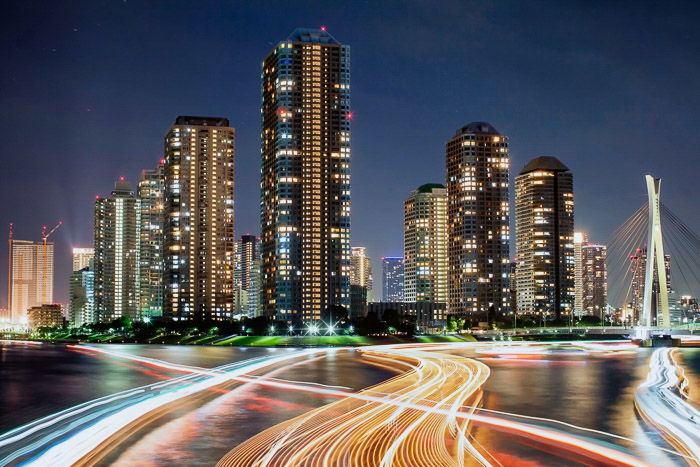
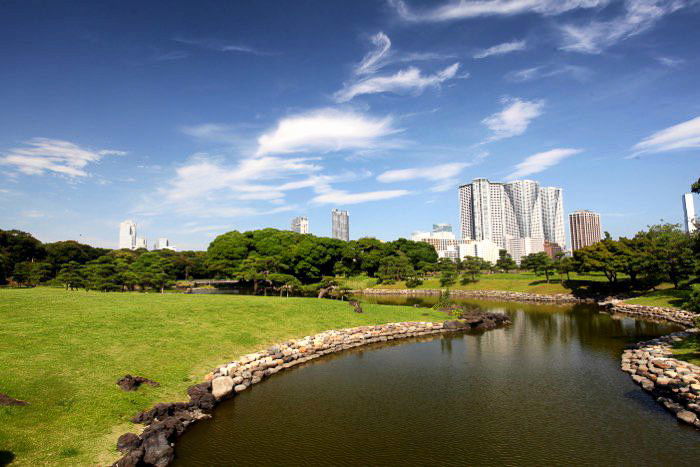
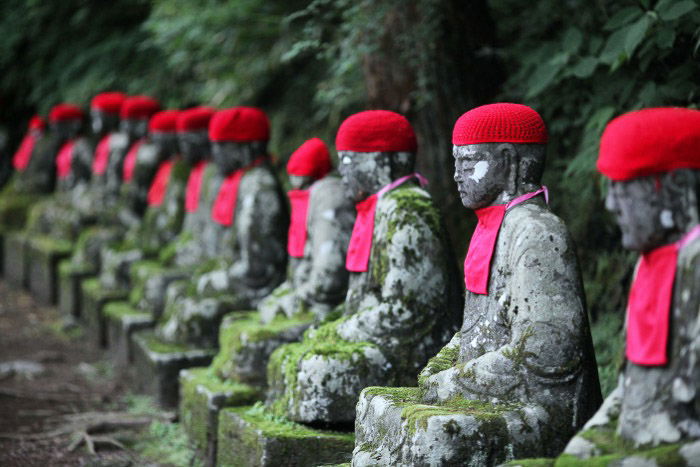
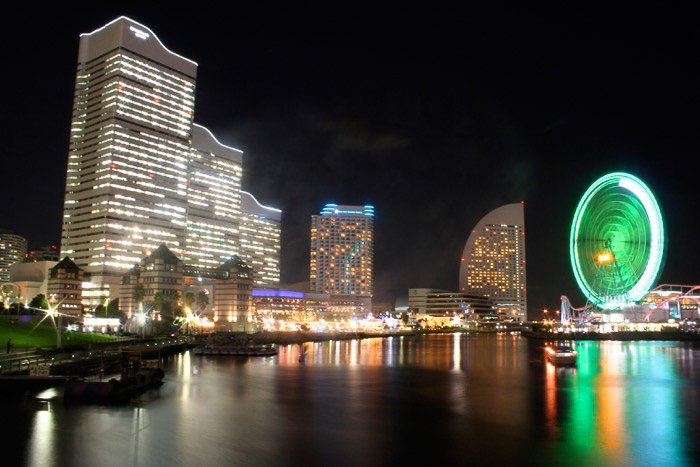
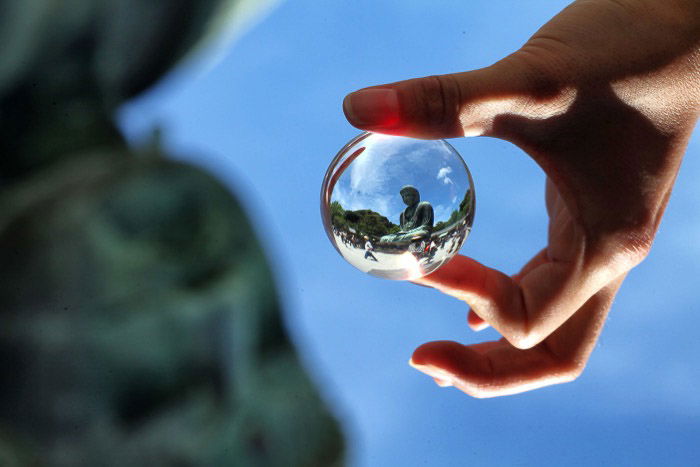
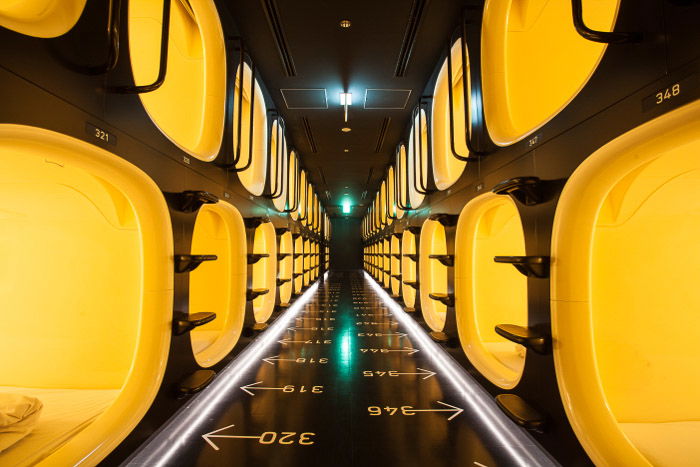
title: “10 Best Tokyo Photography Locations To Try” ShowToc: true date: “2023-01-22” author: “Lana Hunt”
You’ll find neon lights throughout the city, and the world’s busiest pedestrian crossings in the world! Tokyo demands you give it enough time to fully appreciate it. Read on and find out about the best photography locations in Tokyo.
10 Best Tokyo Photography Locations
Tokyo is big. Knowing the best places to shoot will ensure you get some amazing shots of the vibrant city.
10. Shinjuku
Shinjuku is an interesting area of the city. Whether you’re looking at the large crowds of people, the many neon lights, or the skyscrapers of the business district, this area is very much modern Japan. You’ll need a little time to properly wonder around this area. The best time to visit is during the evening.
Kabukicho
This is a vibrant nightlife district within the Shinjuku area. In a city full of neon lights, this is where you’ll find most of them. Those neon lights are why it’s worth coming here in the evening. Come during the day too. You can photograph the famous Tyrannosaurus Rex as it scales the tall buildings of the area.
Memory Lane
The mood you get in this area makes for some incredible street photo opportunities. This narrow alleyway lit up with traditional lanterns is home to lots of restaurants and drinking establishments. It’s very popular among workers from the nearby business district.
Shinjuku Business District
The largest concentration of tall buildings in Tokyo can be found in Shinjuku. This gives you plenty of potential subjects for some modern architecture photography. Among the most famous are the Metropolitan government building, the Mode Gakeun Cocoon tower, and the Sompo Japan building. The Sompo Japan building is a great subject, as it sits right in front of a nice intersection that makes for an excellent foreground. It’s a good idea to bring a wide angle lens with you, to get the most out of this district. Best time to visit—Evening and throughout the night. Location—Memory lane, Kabukicho, Sompo building.
9. Shibuya
Shibuya is another area of Tokyo where you’ll get your fair share of neon lights, shopping, and dynamic energy. Finding some side alleys is the best approach to get a really moody photo. The big draw for many people (including photographers) is that this is the busiest street crossing in the world. This intersection holds the record for the most number of people crossing it at one time. There are a few locations you can use to photograph this place, so let’s break it down.
Street level—With so many people, this crossing obviously gives you street photography opportunities. Aim to show context by including other passersby, and perhaps the white lines of the zebra crossing. You could also attempt to have a friend stay still, while you expose for 1/2 s, to capture the motion blur around them. Starbucks—On the opposite side of the street to the Shibuya subway station is a Starbucks. This sits on the second floor with views overlooking the junction. This is a good option for a slightly elevated view. Magnet by Shibuya 109—Now for that scene-setting photo. Photos taken at street level won’t show just how many people are crossing all at once. That means you’ll need to go roof-topping. Fortunately, there is a roof that’s open to the public. You’ll need to photograph through glass, so watch out for reflections. Use a wide-angle lens to capture the whole scene.
Best time to visit—Visit during the evening rush hour, to ensure the crossing is busy with people. Location—Magnet by Shibuya 109.
8. The Tokyo Skytree
The new tower in town is the Tokyo Skytree. It opened in 2012 and dominates the skyline. This tower presents two types of photo—photos of it and photos from it.
The view—Standing at 634m, this tower offers great views of the surrounding area. On a clear day, you’ll be able to take a series of photos to create a stitched panoramic photo that shows Tokyo in all its glory. The tower—The tower itself offers a great focal point for a cityscape photo of Tokyo. Examples might include juxtaposing the pagoda at the nearby Sensoji temple against the Skytree tower. Alternatively, find a viewpoint where you can photograph the Skytree from another building. Finally, there are locations nearer the base of the tower. These can be used to photograph the tower from street level.
Best time to visit—During mid-morning for a daytime view of Tokyo, or in the evening for a blue hour photo. Location—The Tokyo Skytree.
7. Roppongi Hills Mori Tower
A great view over Tokyo is possible from the Roppongi Hills Mori Tower. It has a viewing gallery at 250m high and an outdoor sky deck at 27m. This tower is one of the prime locations to get a clear view of the business districts of the city, and a view towards Tokyo Tower. It’s the view towards Tokyo Tower that you should visit. The photos taken here are best achieved during the day, or as the blue hour approaches. Should you photograph from the indoor viewing area, make sure you’re careful to avoid reflections on the glass you are photographing through. Best time to visit—Mid-afternoon and into the evening. Location—The Mori Tower.
6. The Tokyo Metropolitan Government Building
Shooting Tokyo photography means you’ll be taking photos of a lot of tall buildings. This is yet another one you can photograph from. The advantage this building has over some of the others is that it’s free! The view from the top also offers a different perspective than the other towers. You’re more in the center of where all the other tall buildings in Tokyo are concentrated. On a clear day, you’ll also be able to see Mount Fuji from this location. But this is also true of all the other towers though.
Worm’s Eye View
This building also offers a great photo from street level looking up. Within the government building complex, there is a circular wall. This wall rings a central courtyard like area in front of the two towers. It’s possible to photograph looking up, and then use this wall to frame the towers. To do this photo justice, you’ll need an ultra-wide-angle lens. A lens with a focal length wider than 15mm or a full frame camera is best. Best time to visit—The blue hour. Location—The Tokyo Metropolitan Building.
5. Harajuku
The beating heart of Tokyo’s youth culture is the reason you’ll want to visit Harajuku. In years gone by, this is the area of town you’d find cosplayers dressing up and visiting Yoyogi park. It’s still possible to see cosplayers here, but times have changed and it’s a lot less common these days. There are plenty of other things to attract the eye of a good photographer though. One such location is the top end of Takeshita street, from where you’ll get a clear line of site down this busy shopping street. One great photo you can take here is of the mass of people as they move along the street. Harajuku is also home to various animal cafes. And you’re allowed to take photos of the pets inside.
Cosplay
The Harajuku girl dressed in vibrant cosplay has been an attraction for photographers in recent times. Though it’s less common to see in Harajuku now, there are still people who enjoy dressing up. To really have a chance to see more of this part of Japanese culture it’s better to visit an event. You’ll need to plan your trip to coincide with one of these, but you’ll be guaranteed some amazing portraits. Best time to visit—Visit during the day or the weekend. Sunday afternoon is the best time to see cosplayers. Location—Harajuku.
4. Asakusa
Having enjoyed the neon lights of Shinjuku, and the youthful energy of Harajuku, it’s now time to capture more traditional Tokyo photography in Asakusa. There are many restaurants and alleyways to enjoy here. The central hub of the area is the Sensoji temple. This is where you’ll be able to photograph some traditional Japanese culture and see Buddhism being practiced.
Kaminarimon gate—The thunder gate is one of the most photographed structures in Tokyo. With its giant red lantern and supporting structure, it’s very photogenic. In order to avoid the crowds, you’ll need to visit here early in the morning. Sensoji temple—The path from Kaminarimon leads up to Sensoji temple, a beautiful temple in the middle of the city. The photo of the Hozomon gate with the five-story pagoda in the background is a popular photo to take here. Street photography—This is an area with great potential for street photography. With devotees and lots of incense smoke around, you can get photos with a lot of moods. You’ll also see people dressed in traditional Kimono dress in this area. You’ll have the chance to contrast them again people in contemporary clothing.
Best time to visit—Early morning to avoid the crowds. Mid-morning to see life around the temple. Blue hour for photos of the illuminated temple. Location—Sensoji temple.
3. Odaiba
The Odaiba area of Tokyo is along the waterfront of the Sumida river, a little outside the center of the city. There are several reasons why you should visit as a photographer, such as the replica of the Statue of Liberty, or the local amusement park. The main reason is to photograph the Odaiba rainbow bridge. There are several excellent viewpoints for the bridge, and you can also take photos as you pass along the bridge on your way to Odaiba.
The train to Odaiba—The train you catch to Odaiba is a monorail. You can sit at the front of the train and take photos through the front window while the train is moving. As the train passes over the bridge, it goes through a tunnel-like structure, and you can create interesting motion blur photos as the train is moving. You’ll need to go handheld, so exposures of around 1/4th of a second work well. The bridge—There are numerous viewpoints to photograph the bridge with the cityscape in the background. You can photograph along the river bank with rocks in the foreground or use an elevated viewing platform. There is also a location you need to pay to enter, with arguably the best view. There is a sphere observation room attached to the Fuji TV building, but check the opening times before you visit.
Best time to visit—A couple of hours before sunset for the bridge motion blur. Blue hour for photos of the bridge. Location—Odaiba.
2. Eitai Bridge
It’s what you can photograph from here that will draw you to this location. You’ll need to arrive early as well. It’s not uncommon for this place to be crowded with others shooting Tokyo photography. The reason to visit here is to capture the moving boats as they pass underneath you and move down the river. Ahead is a group of apartment buildings, and this will provide the main focus to your photo. The location of these apartments is where the river splits, some boats go left and others go right.
Nighttime Long Exposure
This is not a daytime photo either. You’ll need to arrive around sunset and begin photographing during the blue hour. Choose your composition with care. You won’t want to move your camera at all for around one hour. Now wait for boats to pass under the bridge and capture their light trails as they cruise down the river. Boats move much slower than cars. In order to capture the light trails, you’ll need to put the camera on continuous fire. Expose for 30 seconds each time and aim to capture multiple boats during a sequence of around 100 photos. Finally, these light trails need to be merged together and layered on top of each other using post-processing. Best time to visit—Reach the location 30 minutes before sunset. Location—Eitai bridge.
1. Hamarikyu Gardens
Tokyo contains several green spaces worth visiting, with places like Ueno and Harajuku offering good alternatives to the big city. The Hamarikyu gardens are especially beautiful though. They can be accessed by riverboat from Asakusa, or you can use the subway and make the short walk to them. The gardens contain lots of paths canopied by the trees and some nice ponds. You’ll be able to juxtapose some of the more modern city buildings against the green space of this park. Finally in the middle of the park is an idyllic tea house from where you can enjoy a nice view and a nice cup of tea. A little food and drink photography might be an option at the tea house as well. Best time to visit—During the day, on a sunny day. Location—Hamarikyu gardens.
Essential Day Trips From Tokyo
It’s well worth getting out of Tokyo, with some amazing locations within easy reach. The Japanese railway network makes these trips easy to plan with regular and reliable trains. Here you’ll discover three locations which will make great day-trips.
Nikko
To visit Nikko and do it justice, you’ll need to make an early start. It will take you around 2 hours to reach this town by train, and you can leave from Asakusa. There are several places worth visiting. It’s possible to see them all if you arrive early enough.
Toshogu shrine—Nikko has many shrines, but this is perhaps the most important one you can visit. It’s worth visiting in the early morning ahead of the crowds if you can. Kammangafucchi gorge—This gorge contains lines of Buddha statues. These statues all have red woollen hats and a bib. This gives a great color contrast to the natural greens in the background. Kegon waterfall—A little outside Nikko is the Kegon waterfall close to lake Chuzengi. There are several viewing platforms from where you can photograph the waterfall at the site.
Getting there—There are several options to reach Nikko by rail.
Yokohama
Now a large city to the south of Tokyo, Yokohama was once a sleepy fishing village. That all changed when Yokohama became a treaty port that allowed foreign trading in the 19th century. This history means that the town contains some interesting architecture from that era, in addition to the modern buildings found along the waterfront. Yokohama is a great city to visit for cityscape photos, and for a visit to its Chinatown. Getting there—Yokohama is less than an hour from Tokyo by train.
Kamakura
Along with Nikko, a visit to Kamakura will allow you to see more of Japan’s cultural heritage. The giant Buddha statue at Kotokuin temple is quite literally the biggest attraction in town. There are lots of temples and shrines to visit on a very worthwhile day-trip to this town. Getting there—You’ll need to take two trains. The first to reach Kamakura station, and a second to reach Hase station, which is closer to the historic center.
Tokyo Capsule Hotel
There are lots of good options for places to stay in Japan. The idea of staying in a capsule hotel isn’t for everyone, and you may have tried one of these outside of Japan. If you only ever stay in one capsule hotel in your life though, make it the 9 hours capsule in Japan. This is a chain of hotels, so you can find them in other cities in Japan as well. It’s ultra-modern. You’ll feel like you’re staying in a space ship. It’s also possible to get an amazing photo of the line of capsules. Just avoid disturbing other guests if you look to take a photo here.
Conclusion
Shooting Tokyo photography is an amazing experience. There are so many opportunities for great photos. You’ll find immaculately presented food, super modern architecture, and fascinating history. Tokyo is a really great place to begin your adventure in Japan. It will keep you occupied for days. To get the most of your photography, ensure you pack the right travel photography equipment. Don’t forget to bring a tripod with you, and a good prime lens for night-time street photography. Check out our Next Stop: Travel Photography e-book to make the most out of your trip to Japan!
















